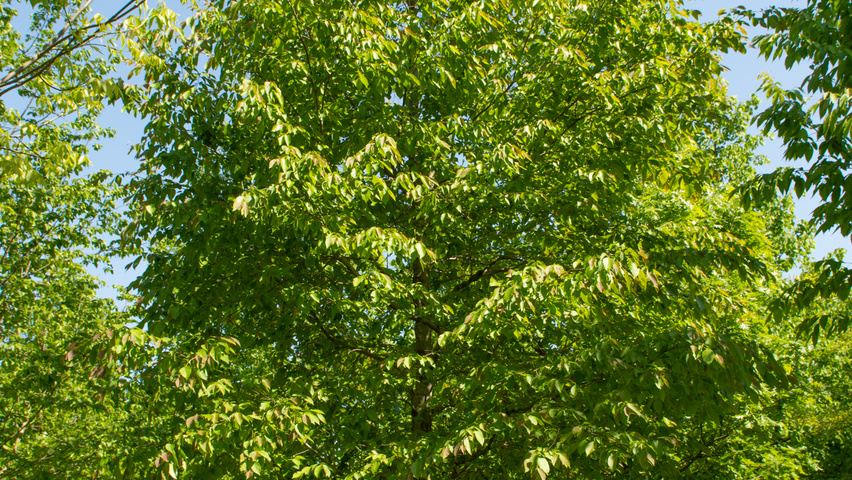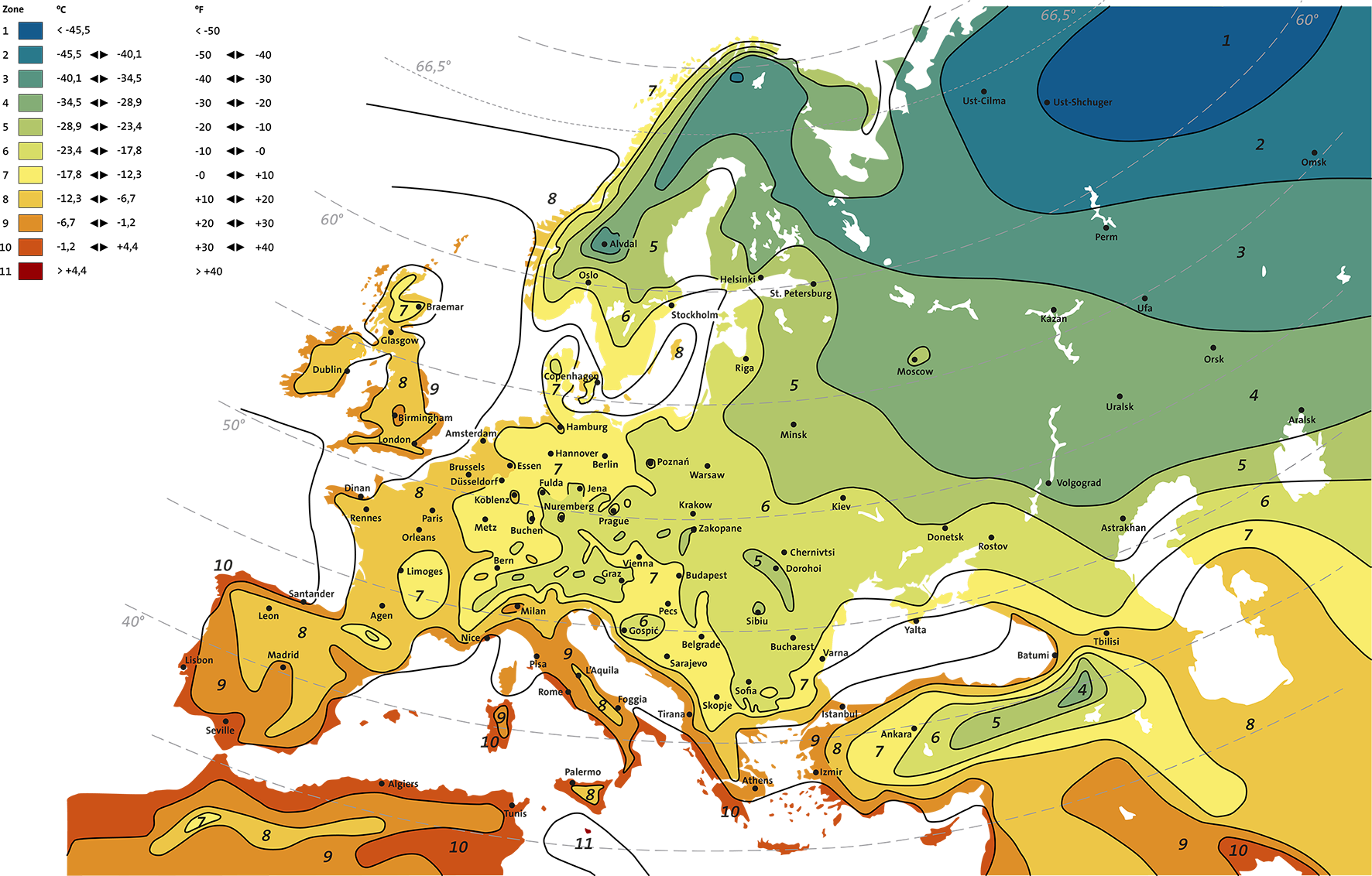Ostrya carpinifolia (Hop-hornbeam) naturally occurs in South Europe and in Asia Minor. The hop-hornbeam grows in the southernmost regions in moist environments with partial shade; in the northern regions, the tree acts more as a pioneer species and grows in light, warm and underdeveloped soil. Ostrya carpinifolia grows in thin, rocky soil and forms the undergrowth in the Pinus nigra forest, along with other species including Carpinus orientalis, Fraxinus ornus and Quercus pubescens. In its original distribution area, the hop-hornbeam grows up to 25 metres tall; in cultivation, it usually does not grow to be more than 18 metres tall with a wide, irregular wide egg-shaped to round crown up to 15 metres wide. Ostrya carpinifolia is a host plant for white truffles.
The hop-hornbeam blooms yellow-green in April with both striking male and short female catkins. In summer, its fruits are even more striking than its blooms: nuts in large, white-green, hop-like fruits and - turning brown - stay on the tree until deep into autumn. The egg-shaped, doubly serrate leaves are dark green, with a light green, hairy underside and turn yellow in autumn. Both the leaves and the tree shape of the hop-hornbeam are similar to those of Carpinus. At an early age, Ostrya carpinifolia has bark covered in lenticels; when it is older, the bark becomes rough and peels off.
Ostrya carpinifolia is mainly suitable for use in parks, central reservations and gardens. But the tree can also be used in wide streets and avenues, as it tolerates pavement and drought quite well. The species prefers warm microclimates and is thus absolutely suitable for use in highly urbanised areas. After planting, the hop-hornbeam initially grows a bit slowly. Once the tree’s roots are a bit further settled, the pace at which it grows will pick up. The hop-hornbeam can handle shade very well, will grow in all types of permeable soil and though it prefers lime-rich soil, it will also tolerate acidic soil. Ostrya carpinifolia is a beautiful, low-maintenance tree that does not suffer much damage.

































































